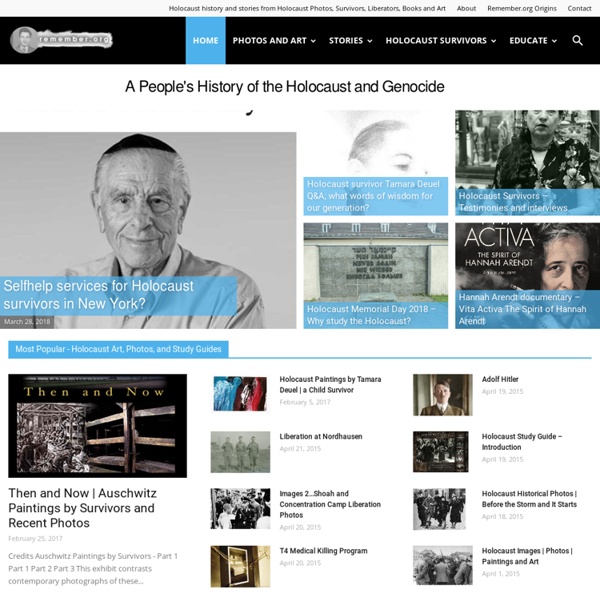



The BBC Flew a Drone Over Auschwitz — And the Result Is Haunting | Mic Seventy years after the liberation of the Auschwitz-Birkenau concentration camp, the pre-eminent symbol of the Holocaust's horrors, the BBC is giving the world a chance to see the haunting ruins as they've never seen it before. The BBC deployed a camera-equipped drone over site, offering a chilling tour of where as many as 1.1 million people died at the hands of Nazis between 1940 and 1945. Located in southern Poland, it was the largest death camp under Adolf Hitler's "final solution." While images of Auschwitz have permeated popular culture, the under three-minute video gives a sense of the scale of the Nazi regime's systematic murder. The footage shows the railroad tracks that brought people in, the red roofs of the prison blocks where "inmates" were forced to do slave labor and the Birkenau wooden huts where the Nazis executed prisoners. The release of the footage coincides with Tuesday's official memorial service making the 70th anniversary since Auschwitz was freed by the Soviets.
About HMDT | Holocaust Memorial Day Trust The Holocaust Memorial Day Trust (HMDT) is the charity that promotes and supports Holocaust Memorial Day (HMD). HMD has taken place in the UK since 2001, with a UK event and over 2,400 local activities taking place on or around 27 January each year. The UK played a leading role in establishing HMD as an international day of commemoration in 2000, when 46 governments signed the Stockholm Declaration. The UK Government had responsibility for running HMD from 2001-2005, organised through the Home Office. In May 2005 HMDT was registered as a charity (charity no: 1109348) and the then Home Secretary David Blunkett appointed HMDT Trustees for the first time. To date, we have overseen massive growth of HMD activities – over 2,400 activities took place across the UK for HMD 2014. Our external evaluation of HMD 2014 indicates that at least 60,000 people attended a HMD activity with nearly 60,000 people engaging with HMD online. 77% of UK adults are aware of HMD, and 21% say they know HMD well.
International Resources for Holocaust-Era Assets Research The International Research Portal is a collaboration of national and other archival institutions with records that pertain to Nazi-Era cultural property. These archival institutions, along with expert national and international organizations, are working together to extend public access to the widely-dispersed records through this single internet Portal. The Portal enables families to research their losses; provenance researchers to locate important documentation; and historians to study newly accessible materials on the history of this period. This collaborative project was established to fulfill the objectives of the 1998 Washington Conference Principles on Nazi-Confiscated Art, the 2000 Vilnius Forum Declaration and the 2009 Terezin Declaration, in particular on the importance of making all such records publicly accessible.
Stanford Encyclopedia of Philosophy Holocaust Timeline Jump to: 1938 1939 1940 1941 1942 1943 1944 1945 1933 January 30, 1933 - Adolf Hitler is appointed Chancellor of Germany a nation with a Jewish population of 566,000. February 22, 1933 - 40,000 SA and SS men are sworn in as auxiliary police. February 27, 1933 - Nazis burn Reichstag building to create crisis atmosphere. February 28, 1933 - Emergency powers granted to Hitler as a result of the Reichstag fire. March 22, 1933 - Nazis open Dachau concentration camp near Munich, to be followed by Buchenwald near Weimar in central Germany, Sachsenhausen near Berlin in northern Germany, and Ravensbrück for women. March 24, 1933 - German Parliament passes Enabling Act giving Hitler dictatorial powers. Terms of use: Private home/school non-commercial, non-Internet re-usage only is allowed of any text, graphics, photos, audio clips, other electronic files or materials from The History Place.
Simulations Can Change the Course of History . . . Classes I went to a Professional Development workshop several years ago with a master history teacher, Eric Rothschild, who spent his career teaching at Scarsdale High School. He was a brilliant workshop facilitator, and I learned more about teaching history in that workshop than in any other professional development experience I'd had up to that point in my career. He ran a workshop on teaching AP U.S. After taking his workshop, I began to apply his approach to teaching AP European History and found it to be liberating and transformational as a teacher. With each unit of study, I made sure to incorporate an active simulation, ranging from mock press conferences and trials to murder mysteries and dinner parties, from spy dilemmas to mock Survivor games. 5 Tips for Bringing History to Life Here are some tips to get started in transforming your history classroom into a simulation-driven, game-based learning environment: 1. 2. 3. Make a space for each student to play an active role. 4. 5.
Primary History - World War 2 The Memorial of Shoah